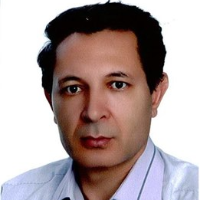New Explanation of the Fundamental Morphology Structure in Geomorphology Science
The importance of words and their role in drawing the intellectual space is not hidden from anyone. Changes in the basic and theoretical concepts of science create the opportunity for new attitudes and the creation of new theoretical concepts in a scientific order. On the other hand, changing the basic concepts requires changing the terminology to prevent the mentality of the scientific community from interfering and overlapping with the previous concepts. The creation of new concepts that are the result of scientific advances in various fields requires a redefinition of the terminology system in that branch of science. Due to the current situation of research in the field of geomorphology, which is mainly focused on the applied sectors and less development of the basic principles has been done, fundamental research and terminological development and the development of the fundamentals of this branch of science are felt. In this research, with the aim of terminological development and development of theoretical roots of geomorphology in the form of a basic research and in general order to provide a redefinition of the hierarchical structure of morphology in the field of geomorphology, the research has been planned. Different branches of science face different phases during their growth and development. In this study, two main phases that affect scientific networks in different periods called static terminological phase and dynamic terminological phase are explained. From a brief overview of the research trends governing the science of geomorphology, infertility in the creation of new concepts and meanings can be inferred that can be attributed to the terms of the static phase of terminology. Coming out of static terminological conditions and entering dynamic conditions requires more attention to fundamental studies and redefining pre-existing concepts in the form of new terminology. In this regard, the basic morphological structure in geomorphology (including 7 levels: Land concept, Land space, Landscape, Landform, Land Feature, Land Object), relationship structures (Hierarchical or non-hierarchical relationships, intra and inter-level relationships, one-way and two-way relationship), scale levels (including: universal, global, regional, zonal, focal, local, pointwise), and flow of energy are explained.
Different branches of science face different phases during their growth and development. Two main phases that affect scientific networks in different periods, in this research, are named and explained Dynamic Terminological Phase (DTP) and Static Terminological Phase (STP). Given that the theoretical development of different branches of science is associated with terminological development and this relationship is a kind of interrelated relationship, in the dynamic phase of terminology, different branches of science, are more dynamic which this would be reflected in the terminological production volume. In the other phase, the volume of terminological production is reduced and is a kind of response to scientific stagnation, which is called the static phase of terminology, and is an indicator of fundamental stagnation and scientific development in that branch of science. Formerly, form units in geomorphology have been considered based on units of landscape, land view, land form and land feature (Ramesht, 1384, 15). In the classification presented in this research, the resolution of the classification system and their leveling is presented in a different way. The distinctive feature of the recently proposed structure is its higher resolution as well as its semantic nature.In this hierarchical system, each form unit can contain a number of sub-units. From the combination of seven hierarchical units of form, the structure of modern morphology in geomorphology is formulated, the largest unit of morphology unit in this structure is land concept and the smallest unit is land-object. In this structure the land concept, land space, land context, landscape, landform, land feature, land object, have universal, global, regional, zonal, focal, local, and point-wise scales, respectively. The scale levels are also classified into four Major classes: Mega, Macro, Meso, and Micro. In the proposed formulation structure, 10 different types of interaction and relationship that are related to the structure of this structure, are explained. These relationships can be hierarchical or non-hierarchical, intra-level or inter-level, one-way or two-way. From the combination of the above states, ten relations are created. morphic relations in this form structure can be divided and classified into two main groups: vertical and horizontal.
The nature of the current space governing the science of geomorphology, which is itself a function of the space of the scientific community as a whole, indicates a stagnation in the birth of concepts and being in a static terminological phase. Such conditions justify the need for such fundamental studies in order to open new spaces. With this explanation, monitoring the content and semantic space of geomorphology, it seems that this science, like many other sciences, is in a static phase of terminology. This issue can, over time, damage the meaning and spirit of a scientific discipline. In this research, the solution to get out of this space and try to enter the dynamic terminological phase, through the design of new meanings in the form of new terminology has been considered. In this regard, the basic formulation system that was proposed in geomorphology with a completely new structure and different hierarchical levels, has been configured and developed in the form of a new terminological design. This new system of morphology is presented in 7 different levels, including: Land Concept, Land Space, Land Context, Land scape, Land form, Land feature and Land object is Provided.In the proposed morphological structure, 10 different types of relationships and the relationship that these relationships have with the morphological structure are explained.Scale The studies at each of the hierarchical levels of the proposed morphological system are explained on a universal, global, regional, zonal, focal, local and point scale, respectively.
- حق عضویت دریافتی صرف حمایت از نشریات عضو و نگهداری، تکمیل و توسعه مگیران میشود.
- پرداخت حق اشتراک و دانلود مقالات اجازه بازنشر آن در سایر رسانههای چاپی و دیجیتال را به کاربر نمیدهد.




